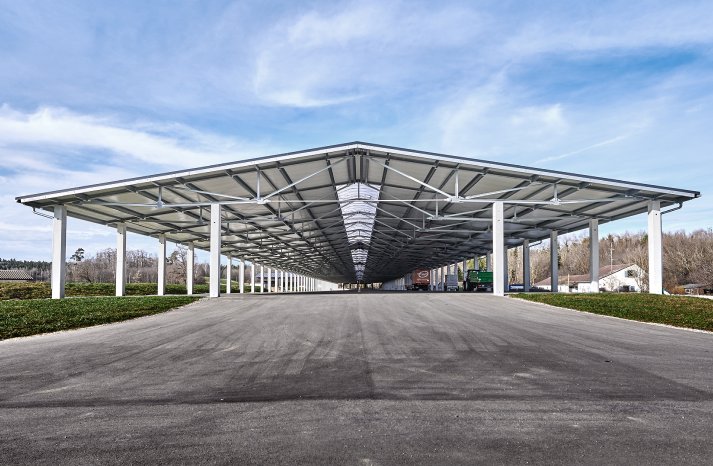Fire protection through hot-dip galvanizing is simplified
Approval in individual cases will not apply in the future
Fire protection through hot-dip galvanizing has quickly proven to be an economical and sustainable alternative to established fire protection systems and has already been used in many cases. In Germany, this required an individual approval (ZiE) or a project-related type approval (vBG). With the inclusion of the DASt guideline 027 "Determination of the component temperature of hot-dip galvanized steel components in the event of fire" in the model administrative regulation technical building regulations MVV TB 2023/1, a ZiE or vBG is no longer required in the future, because fire protection through hot-dip galvanizing has been declared a regulated construction method. Since the building law belongs to the sovereignty of the federal states, the MVV TB 2023/1 still has to be implemented by the individual federal states in order to become valid there. This has already happened for Brandenburg, Bremen and Mecklenburg-Western Pomerania; experience has shown that MVV TB 2023/1 will be implemented in the next few months in the other federal states. The German Institute for Construction Technology (DIBt), as the highest technical building authority, offers a current overview of the implementation status of MVV TB 2023/1 in the PDF "Status of implementation..." at: https://www.feuerverzinken.com/dibt
Hot-dip galvanizing improves the fire resistance of steel structures, as hot-dip galvanized steels are characterized by lower emissivity. Emissivity is a measure of how strongly a material exchanges thermal radiation with its surroundings. Especially in the initial phase of a fire, reduced emissivity values lead to significantly delayed heating of the steel components and can make a significant contribution to achieving the required fire resistance of R30, especially in the case of components with sufficient solidity. Construction projects that have already been completed show the diverse range of uses for fire protection through hot-dip galvanizing in steel construction. Hall buildings, residential and commercial buildings, individual supports, pergola constructions or buildings such as rooftop areas or industrial extensions are just a few examples. If you want to use hot-dip galvanizing for fire protection, you have to provide mathematical proof by means of a hot calculation. For this purpose, the Hot-Dip Galvanizing Institute offers a free dimensioning tool. In addition, software manufacturers such as mb AEC Software and Dlubal Software have design programs for fire protection through hot-dip galvanizing in their portfolios.
More on the subject of fire protection through hot-dip galvanizing, including the free download option for DASt Guideline 027 and a design tool, at: https://www.feuerverzinken.com/brandschutz
Hot-dip galvanizing improves the fire resistance of steel structures, as hot-dip galvanized steels are characterized by lower emissivity. Emissivity is a measure of how strongly a material exchanges thermal radiation with its surroundings. Especially in the initial phase of a fire, reduced emissivity values lead to significantly delayed heating of the steel components and can make a significant contribution to achieving the required fire resistance of R30, especially in the case of components with sufficient solidity. Construction projects that have already been completed show the diverse range of uses for fire protection through hot-dip galvanizing in steel construction. Hall buildings, residential and commercial buildings, individual supports, pergola constructions or buildings such as rooftop areas or industrial extensions are just a few examples. If you want to use hot-dip galvanizing for fire protection, you have to provide mathematical proof by means of a hot calculation. For this purpose, the Hot-Dip Galvanizing Institute offers a free dimensioning tool. In addition, software manufacturers such as mb AEC Software and Dlubal Software have design programs for fire protection through hot-dip galvanizing in their portfolios.
More on the subject of fire protection through hot-dip galvanizing, including the free download option for DASt Guideline 027 and a design tool, at: https://www.feuerverzinken.com/brandschutz

